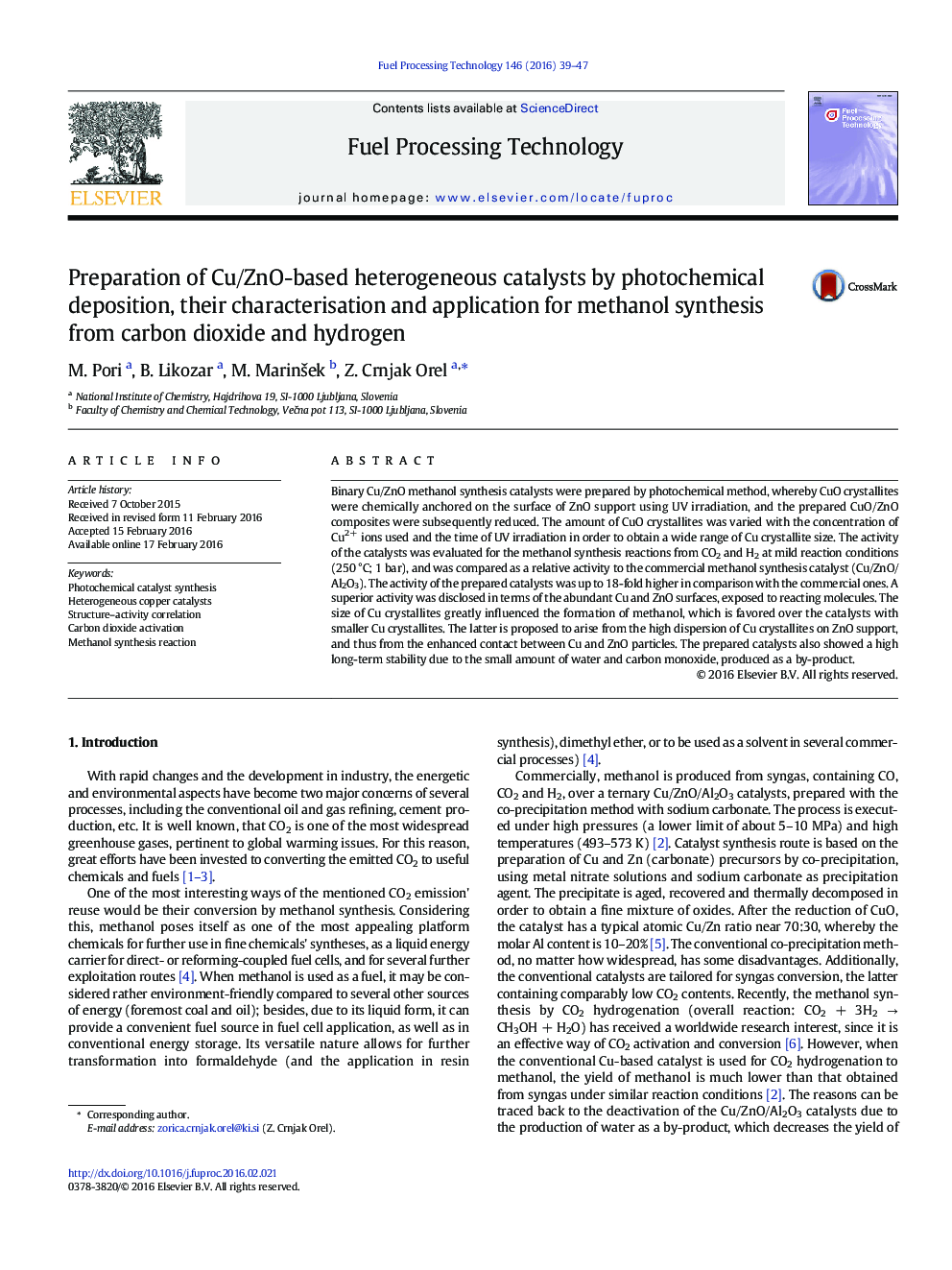| Article ID | Journal | Published Year | Pages | File Type |
|---|---|---|---|---|
| 209223 | Fuel Processing Technology | 2016 | 9 Pages |
•Cu crystallites were deposited on the ZnO carrier surface by photochemical method.•Formation of methanol was favored over the catalysts with smaller Cu crystallites.•Catalysts exhibited a high long-term stability with a low amount H2O and CO produced.•Structure–activity relationships established for Cu/ZnO heterogeneous catalysts•Carbon dioxide efficiently hydrogenated owing to plentiful Cu/ZnO interface layers.
Binary Cu/ZnO methanol synthesis catalysts were prepared by photochemical method, whereby CuO crystallites were chemically anchored on the surface of ZnO support using UV irradiation, and the prepared CuO/ZnO composites were subsequently reduced. The amount of CuO crystallites was varied with the concentration of Cu2 + ions used and the time of UV irradiation in order to obtain a wide range of Cu crystallite size. The activity of the catalysts was evaluated for the methanol synthesis reactions from CO2 and H2 at mild reaction conditions (250 °C; 1 bar), and was compared as a relative activity to the commercial methanol synthesis catalyst (Cu/ZnO/Al2O3). The activity of the prepared catalysts was up to 18-fold higher in comparison with the commercial ones. A superior activity was disclosed in terms of the abundant Cu and ZnO surfaces, exposed to reacting molecules. The size of Cu crystallites greatly influenced the formation of methanol, which is favored over the catalysts with smaller Cu crystallites. The latter is proposed to arise from the high dispersion of Cu crystallites on ZnO support, and thus from the enhanced contact between Cu and ZnO particles. The prepared catalysts also showed a high long-term stability due to the small amount of water and carbon monoxide, produced as a by-product.
Graphical abstractFigure optionsDownload full-size imageDownload as PowerPoint slide
